SPUR Talk: Checking in on Vision Zero
5:04 PM PDT on October 4, 2017
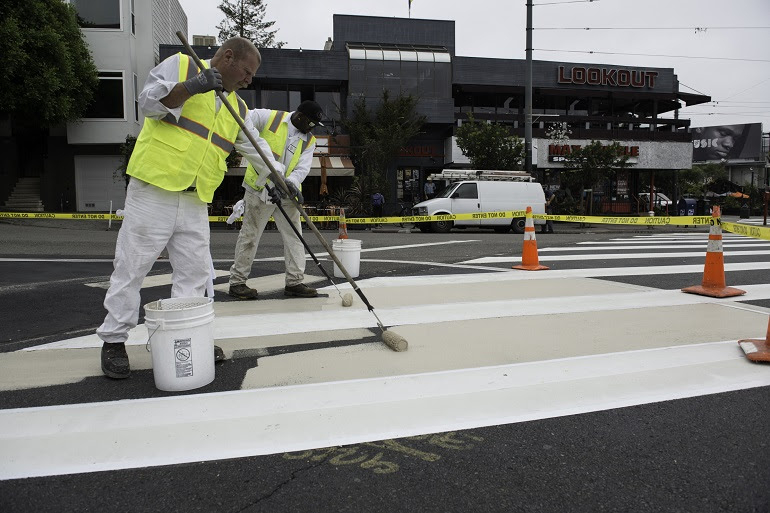
SFMTA crews improving crosswalk viability. Photo: SFMTA.
"Every year, 360 people are killed in the Bay Area as a result of traffic crashes," said Jenn Fox, with the Vision Zero Network. "Each of these tragedies is a person--a family member, a community member ... we must get over our complacency."
Fox gave these morbid statistics as part of a review of the founding principles and policies behind 'Vision Zero,' during a talk this afternoon in SPUR's San Francisco location. The panel, which included advocates and representatives from transportation agencies, was an update and review of the programs, plans and efforts to eliminate traffic deaths in the Bay Area. "22 cities in the US are committed to Vision Zero," she said. "So much of the work happens at a city level, but it's a regional issue and a national issue."
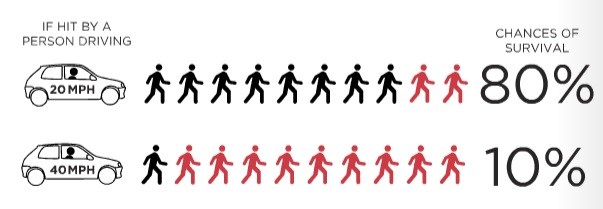
Achieving those goals takes data, a change in cultural priorities, getting motorist to drive at safe speeds, and, above all, money. Distributing money for Vision Zero programs is, in large part, the job of the Metropolitan Transportation Commission (MTC). Anne Richman of the MTC reviewed some of her agency's grant programs. Those include the One Bay Area Grant (OBAG), that offers about $350 million to counties, over a five year program, for safety projects. They also administer the Active Transportation Program (ATP), at $19 million per year, the 'Lifeline' program, which goes to safety projects in traditionally poor and working class areas, and 'Safe Routes to Transit,' a $20 million grant. She also talked about Regional Measure 3, a bridge-toll increase that, if it gets on the ballot and is passed by voters, would provide $150 million towards complete streets programs.
Clarrissa Cabansagan was there for the advocacy group Transform. She argued that efforts to achieve Vision Zero have to be addressed differently in minority and low income areas. "African-American children are two times more likely to be killed while walking than white children," she said. "There's a vicious cycle of a lack of investment in transportation choices for these communities."
She talked about some of the southeastern communities of San Francisco, and how "There is a lack of choices, a lack of affordable housing, and that ties into why people use cars." She showed a photograph of a sidewalk in West Oakland that was completely obstructed by garbage. "There's so much illegal dumping on the sidewalk... garbage on the streets is a visceral reality for some communities," she said, making the point that when existing sidewalks are completely blocked by trash and encampments, talk of safe bike lanes, safer crossings, etc. can seem downright absurd. After all, if residents can't even use the sidewalk, what difference does it make if the city adds bulbouts or the crosswalk is improved?
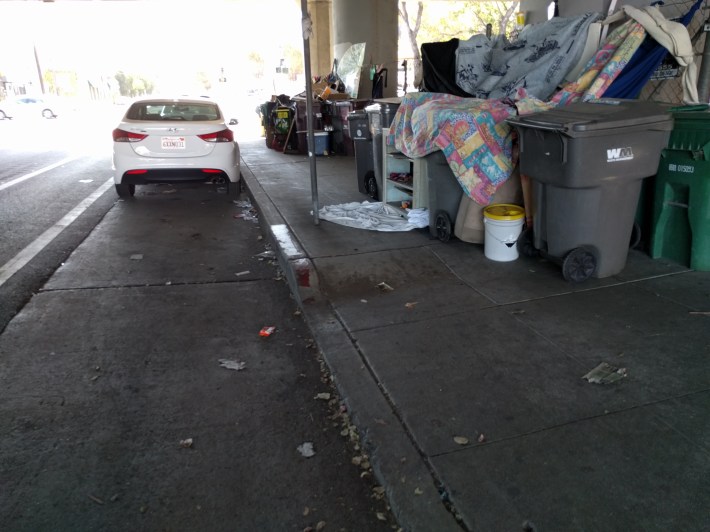
The last speaker on the panel, SFMTA's Luis Montoya, reviewed the history of San Francisco's commitment to Vision Zero--which became official policy in 2014, although he said the agency was working on Vision Zero issues long before that. "By setting the goal to zero, you're saying that all [traffic] deaths are preventable." One of the simplest ways to move the city in that direction is through Automated Speed Enforcement (ASE)--cameras that automatically ticket speeders, he said. But ASE is currently illegal in California and attempts to get legislation to authorize a pilot ASE program in San Francisco and San Jose have failed so far, although efforts continue." ASE would be a game changer, to multiply the effects of traffic enforcement," he said, adding that it's "a color-blind way" to do traffic enforcement.
Unfortunately, the speakers had to report that, thus far, Vision Zero efforts are showing only marginal--at best--results. As Montoya reported, there are still about 30 people who die every year in San Francisco and that number, although there are some hopeful signs, isn't showing definitive signs of improving. He added, hopefully, that streets may be getting safer, but the death rate may be flat because of the increase in San Francisco's population. Richman said that MTC is looking at traffic deaths as a health crisis, and, despite some progress, their figures also show that the Bay Area is not on track towards Vision Zero. That data, by the way, is available for public study on the MTC's 'Vital Signs' webpage.
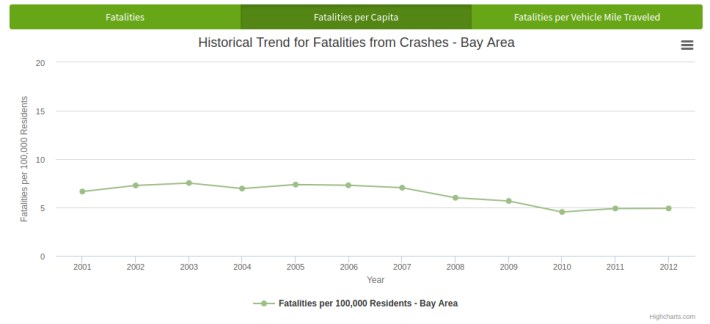
"Even though the Bay Area is a very progressive place, with political leadership around Vision Zero, we have big push-back on projects," said Montoya. "We still have 50 percent of trips happening by auto, so while we're trying to redesign our streets, we have to keep in mind the political realities on our projects ... and we still have a culture that prioritizes speed over safety." He said that it's a challenge convincing people that adding bike lanes will cause motor traffic to improve, but he pointed out that the evidence is there. "After the Loma Prieta earthquake, roads fell," he said, and that reduced demand for traffic (sort of 'induced demand' in reverse). "Traffic actually did go away."
That said, all of the speakers stressed the importance of thinking regionally and not focusing too much on downtown San Francisco. "It's important to realize how privileged you are if you can walk or bike to transit or your destination," said Cabansagan. "But 81 percent of low-income families are still driving to work, so think about prioritizing investment in suburbs, where people often don't even have sidewalks and they can't think about walking to a strip mall--even when it's just down the block." She encouraged investment in programs such as 'Safe Routes to Transit.' "Concord was able to plan a pedestrian and bike master plan...let's make it possible for people to chose a different behavior."
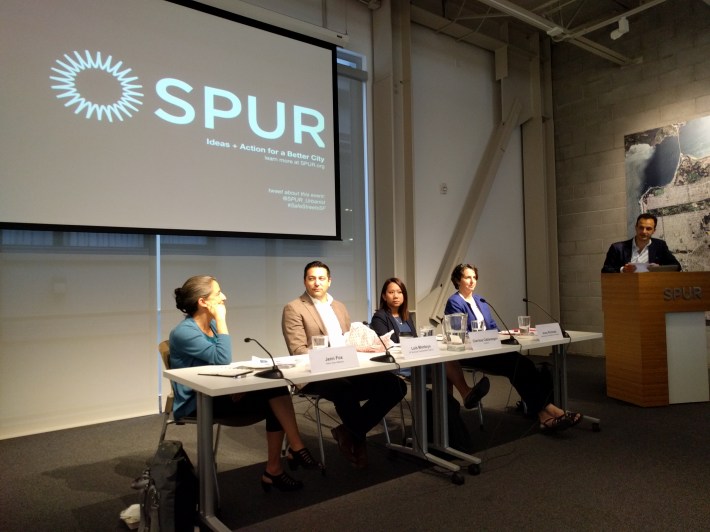
For more events like these, visit SPUR’s events page.
Read More:
Stay in touch
Sign up for our free newsletter
More from Streetsblog San Francisco
Commentary: Making Valencia Better for Business
Curbside protected bike lanes with curbside parklets deliver on much-needed economic benefits for merchants while ensuring safety for all




